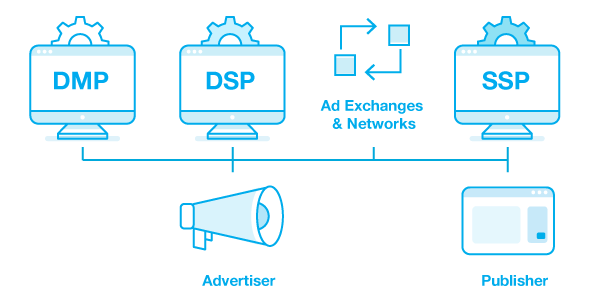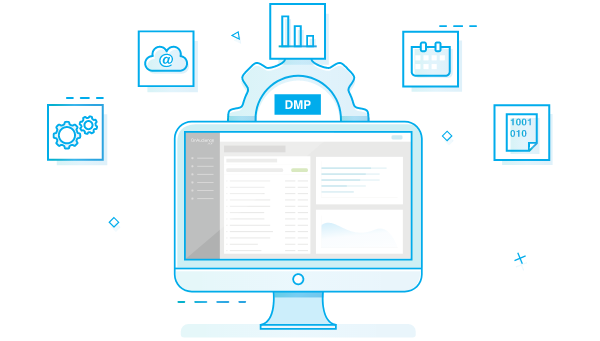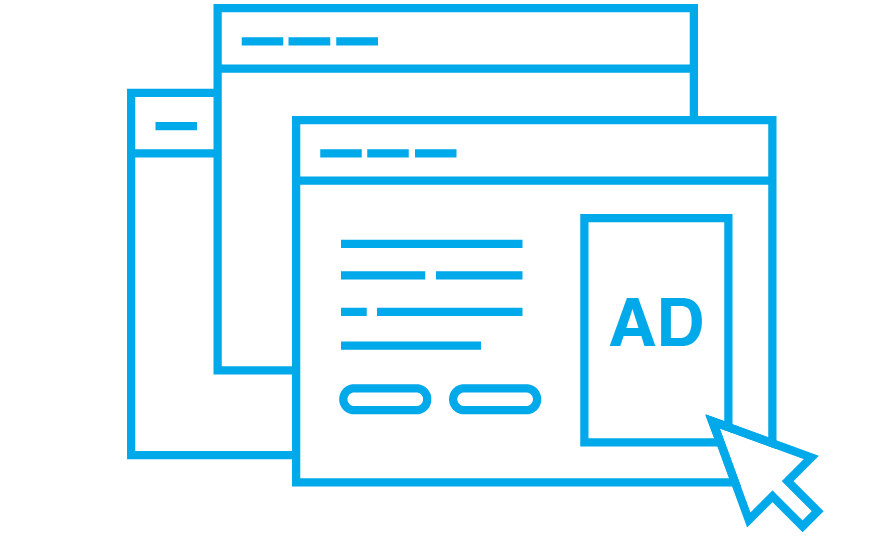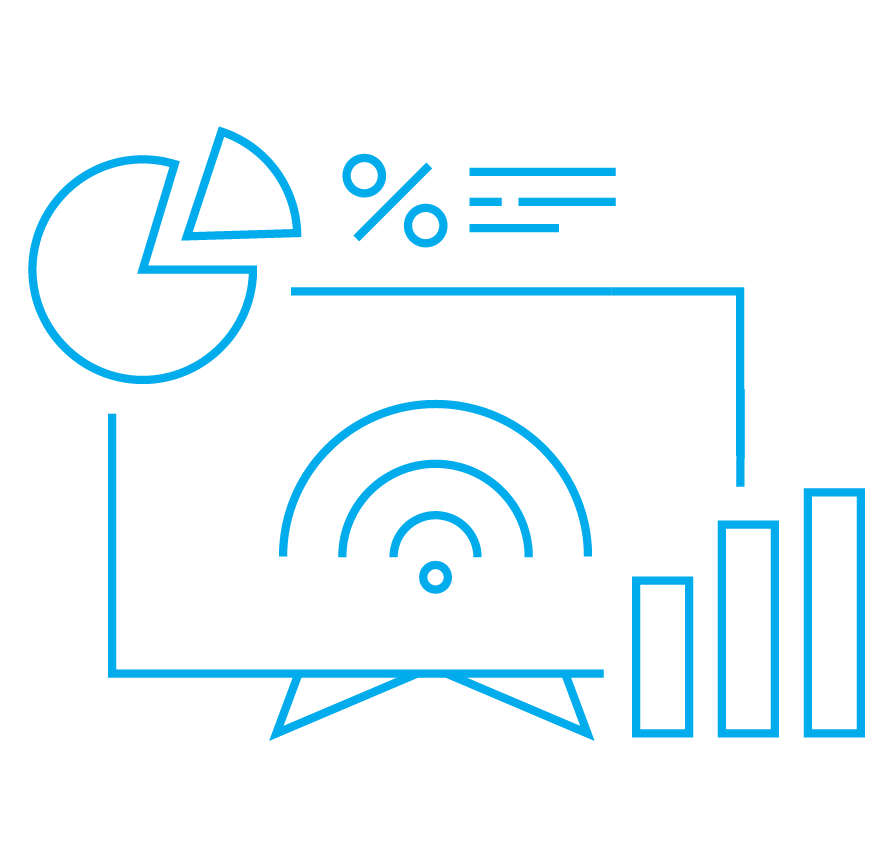- What is a Programmatic Advertising Platform
- Programmatic Advertising Platforms: types and main points
- TOP DSPs - what are the best advertising platforms?
- Learn more about OnAudience – a company that provides data for programmatic ad platforms
- Conclusions
Overview:
- What is a Programmatic Advertising Platform?
- Programmatic Advertising Platforms: types and main points
- Supply Side Platform (SSP)
- Demand Side Platform (DSP)
- TOP DSPs – what are the best advertising platforms?
- Data Management Platform (DMP)
- Ad Exchange
65% of digital media is programmatic this year, Zenith says. So, why so many marketers use programmatic advertising platforms for their client promotion? They say these platforms reduce human effort by automating routine tasks. So, programmatic platforms help to save time. The platforms’ algorithms eliminate non-human traffic which makes marketing budget to be directed at the actual potential customers. Programmatic platforms help to increase ROI. Cool, isn’t it? Let’s take a look at the possible profits that you can gain out of it.
What is a Programmatic Advertising Platform
Programmatic advertising platform is a part of the programmatic ecosystem, where each part is responsible for its own stage of the programmatic advertising process. The result of their cooperation altogether serves for marketing, analytical and operational purposes. All platforms are set in advance to make their job simultaneously, according to the point of programmatic advertising – to reach users from a certain target audience with a personalized message, just at the right time.

Programmatic Advertising Platforms: types and main points
There are multiple programmatic advertising platforms that in collaboration with the client’s 1st-, 2nd- and 3rd party data bring the predicted result during online campaign planning. Those are DSP (Demand Side Platform), which stands by the advertiser side, SSP (Supply Side Platform) that possesses the publisher’s inventory, ad exchange where they all meet and data provider (like DMP) to collect, organize and manage audience data.
Let’s take a look at the main points of each of the programmatic advertising platforms on RTB example. RTB is the most popular model of programmatic buying that allows marketers to run automated online campaigns with predefined advertisement values, such as attributes of target audience: demography, interests or purchase intentions.
In RTB model media are automatically purchased in an auction-based model, while the website is loading. The whole auction lasts about 100 ms and after that, the ad is displayed to the user with the most suitable attributes.
• Supply Side Platform (SSP)
In order to set all things up and have it working, publisher submits to SSP their web-page as a source for an advertisement. Everything is agreed on Ad Exchange. Page owner implements into the web-page a special pixel code, which helps to observe visitors’ behavior and then to provide received information to the data provider for further analytical actions.
What publishers can do in SSP:
- filter out (e.g., by the advertiser) the ads, which will be shown on the page,
- set a low rate for the ad space to define the lowest cost of that place.
The main purpose of SSP for publishers is to sell the ad space with the highest rate, they can get. SSP gathers a network of publishers and helps them increase their profit by selling ad inventory in an automated model.
Popular SSP systems on the market now:
- AppNexus
- DoubleClick
- SmartyAds
• Demand Side Platform (DSP)
While publishers communicate through SSP platforms, advertisers make their bids to DSP as a programmatic advertising platform. DSP stores user profiles and 3rd party data from data providers. Based on this information and declared bids from advertisers, when a user comes into the page, DSP makes a decision, which includes the main points:
- what bid should be taken for the particular user. The highest bid wins.
- what content the ad would have,
- how much it would cost for the advertiser. Of course, the lower the better.
Therefore, publishers implement dedicated pixel into their website, so every time users visit the page, data provider gathers information about them to build audience segments that can be divided into demographic data, current interests or buying intentions and send this all to DSP. If you want to check TOP DSPs, just jump to the section with the most popular DSPs.
Meanwhile, DSP has prepared a bunch of advertisers, who are waiting for their ads to be viewed by the users. Advertisers make their bids per user – to be super precise in finding the best one for their campaign.

Ad Exchange together with DSP launch embedded decision machine with all these user profiles and corresponding ads and choose the best pair. Once the decision is made, SSP finds out about it instantly. SSP sends the ad code to publisher, code is posted inside the page and voila – the most appropriate ad is shown to the most adequate user, just in time. The whole process happens in a blink of an eye, automatically.
TOP DSPs – what are the best advertising platforms?
By using DSPs, advertisers can buy ad space and target the chosen audience with personalized ads. There are a few popular platforms that are used frequently. We’ve created a shortlist of TOP DSPs below, so you can check which one is the best for your company.
If you are using a DMP, you can be integrated with the platform from our TOP DSPs list. Using this platform is the fastest and probably the best way to deliver ads to created target audiences.
Take a look at TOP DSPs on the market now:
- Adform
- DV 360 (Google)
- The Trade Desk
- AppNexus
- Adobe Advertising Cloud
- BidTheatre
- MediaMath
• Data Management Platform (DMP)
Data Management Platform (DMP) is an independent programmatic advertising platform, where the data is being collected, analyzed, managed and activated. Having stored 1st-, 2nd, and 3rd party data, DMP represents a great source of 360-degrees user profiles for marketers.
For example, their demographic characteristics, current interests and buying intentions. The corresponding dataset is used within a programmatic algorithm, which searches for the best pair of the ad and the best converting user.
Besides the basic DMP functions, OnAudience DMP offers also an additional source with deep insights into the customers’ characteristics. It is Audience Reports that you can generate on OnAudience DMP platform instantly.
They allow you to find what differentiates e.g. your best converting users from the whole population of your country. Audience Reports show you which attributes are occurring the most often among your best clients. It gives you a great insight for finding new clients and targeting the right users in upcoming campaigns.
• Ad Exchange
Ad exchange is a platform, where DSP and SSP meet for the ads to be sold and bought which means it’s like a center of all programmatic magic. There are various systems that offer DSP, SSP and DMP functions in one ad exchange. Those are kinds of hybrid solutions that serve basic functions of each of the advertising platforms that participate in the programmatic advertising process. They don’t allow setting advanced configurations, however.
Popular Ad Exchanges on the marketing market now:
- AppNexus
- DV 360
- SmartyAds
Learn more about OnAudience – a company that provides data for programmatic ad platforms
As an owner of the largest database of audience data in Europe, OnAudience.com is one of the world’s largest data providers which offer packed audience segments (1,200+ segments) and distributes them within the most popular DSPs and audience data marketplaces at the same time.
Additionally, OnAudience offers data for targeting programmatic campaigns that is:
- GDPR-compliant
- Accurate & up-to-date (confirmed by Nielsen DAR)
- Made up of 1,200+ predefined segments and 27 billion user profiles
Conclusions
In digital marketing, manual solutions are not cost-effective anymore, because marketing technology went further a long time ago. This persuades marketers to use programmatic advertising platforms in terms of automatic marketing solutions. Programmatic platforms allow marketers to set the most advanced campaign configurations and spot a predicted result, and even more.
As long as your business depends on your customer encouragement, you are more than welcome to use modern advertising technologies. They can be used individually, performing each of the available functions successfully, but more effective and profitable they become being used together. Study your business model, build efficient data strategy, and choose the most suitable way to reach your target group intelligently.




